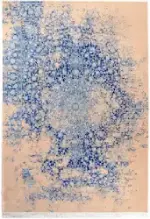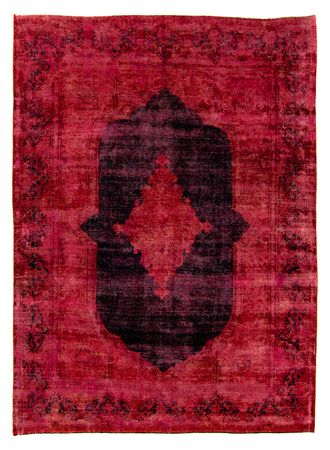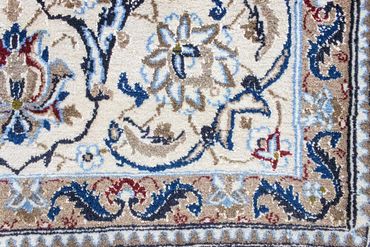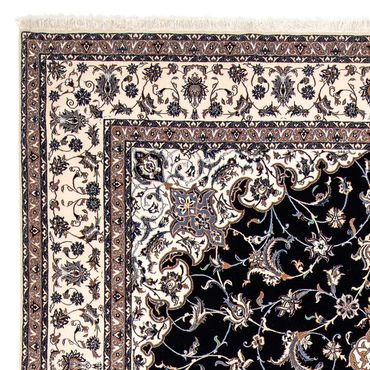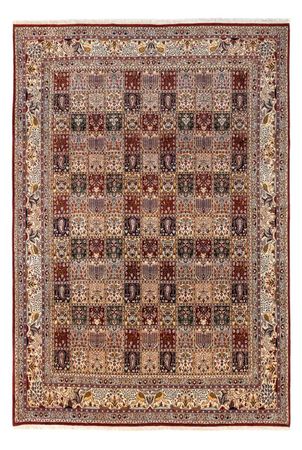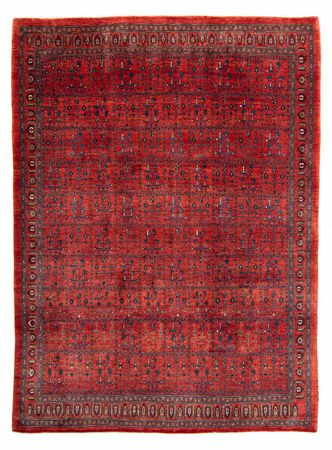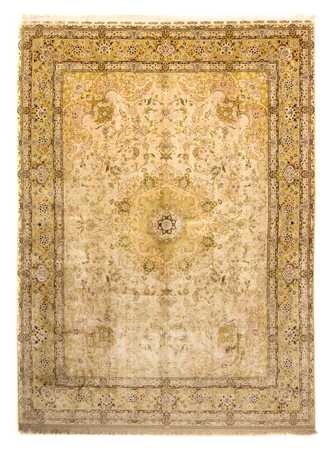- Perser Rug - Tabriz -
360 x 24911,092 £
- Perser Rug - Nomadic -
365 x 2634,009 £
-
- Silk Rug - Ghom Silk - Premium -
353 x 24221,266 £41,813 £
-
- Ziegler Rug -
352 x 2415,252 £
-
- Perser Rug - Bidjar -
350 x 2438,424 £
-
- Vintage Rug -
349 x 2582,693 £
-
- Ziegler Rug -
345 x 2453,767 £7,517 £
-
- Afghan Rug - Hatschlu -
338 x 2571,478 £3,465 £
-
- Perser Rug - Classic -
335 x 2464,576 £
-
- Ziegler Rug - Ariana -
371 x 2685,526 £
-
- Perser Rug - Nomadic -
368 x 2723,625 £
-
- Perser Rug - Keshan -
354 x 2402,031 £
-
- Perser Rug - Nain - Royal -
348 x 2455,282 £10,373 £
-
- Perser Rug - Classic -
348 x 2423,510 £
-
- Gabbeh Rug - Kashkuli Perser -
345 x 2607,807 £14,998 £
-
- Perser Rug - Nomadic -
330 x 2603,586 £6,825 £
-
- Perser Rug - Classic -
350 x 2504,383 £
-
- Perser Rug - Classic -
367 x 24311,043 £
-
Buying rugs online – your guide to making the perfect choice
Rugs complete rooms by giving them warmth, texture, and aesthetics. They are always a beautiful addition, no matter what your preferences are. Whether modern and luxurious or cosy and inviting, they have always been used to make a statement and to transform or harmonise interiors.
We live in a time when trends are constantly changing. A timeless rug can withstand these changes and is therefore a popular and important decorative element that no household should be without. However, choosing the ‘right’ one can be overwhelming due to the seemingly endless selection of materials, colours and patterns.
This guide is designed to provide you with all the information you need to buy the perfect rug and help you decide on your purchase.
Good to know: an overview of the main types of rug.
Oriental rugs
Oriental rugs are a symbol of centuries-old craftsmanship and tradition. Traditionally hand-knotted in countries such as Iran, Afghanistan and Turkey, they are known for their vibrant colours and intricate patterns, which often include floral motifs, geometric shapes and symbolic images. Each Oriental rug reflects the artistry and culture of the region from which it originates. Often made from high-quality materials such as wool or silk, they can last for generations if well cared for, bringing elegant sophistication and history to any room.
Persian rugs
Persian rugs are valued as works of art worldwide. They are characterised by detailed ornaments, fine materials and natural colours derived from plants and minerals. In addition to their extraordinary beauty, they shine through their remarkable longevity. They blend well with both classic and modern interiors, giving any room a luxurious feel.
Unlike Oriental rugs, a collective term for rugs from various regions of Asia, Persian rugs are characterised by the specific techniques, patterns and regional styles of Iran.
Modern rugs
Modern rugs offer a fresh and contemporary alternative to traditional designs. They impress with minimalist structures, abstract forms and a colour palette ranging from neutral to bold tones. They often incorporate elements of the modern art movement, which is characterised by reduction, abstraction and experimentation with forms and colours. A wide range of materials can be used to make them, including natural fibres such as wool and cotton, as well as synthetic fabrics that provide additional durability.
They fit perfectly into contemporary living spaces, complementing any interior in a stylish and functional way, and there is something for every taste and style – in line with the creative freedom that also characterised the modernist era.
Children's rugs
A children's rug is specially designed with the needs and interests of children in mind. It is characterised by cheerful colours and an appealing design; often featuring patterns or motifs that stimulate the imagination and invite children to play. In addition, it is cosy and relaxed, creating a comfortable environment.
The rugs are usually made of durable, easy-to-clean materials to withstand the lively activity in children's rooms. They not only provide a casual playing surface, but also help create a welcoming and inspiring space.
Runners
Runner rugs are long, narrow rugs that are ideal for use in hallways, entrance areas or as bedside rugs due to their shape. They are a practical way to accentuate these rooms and at the same time protect floors in high-traffic areas. Runners come in a variety of styles, from traditional to modern. They are often made of durable materials to withstand daily wear and tear.
Outdoor rugs
Outdoor rugs are specially designed to be used outside, combining style and function. They are extremely durable, making them ideal for balconies, terraces and garden areas, and are usually made of robust synthetic materials such as polypropylene, which are both dirt and water repellent and can withstand UV radiation without fading.
Thanks to their hard-wearing nature, outdoor rugs can easily withstand changing weather conditions and are also easy to clean – simply hosing or wiping them down is enough. They are available in a wide range of colours and designs, so they can be easily matched to your outdoor furnishings. Whether you are looking for a subtle design or an eye-catching decor, outdoor rugs are a clever way to make your outdoor space inviting.
High-pile rugs
High-pile rugs, also known as ‘shaggy rugs’, have particularly long, supple fibres that give them a fluffy and comfortable texture. The high pile, usually with a fibre length of over 1.5 cm, makes walking on them a very sensual experience. They look particularly good in living rooms and bedrooms, and are perfect for walking on bare feet. They are great for spending time on the floor, whether it's reading, playing or relaxing.
However, this type of rug requires a little more intensive care. Regular vacuuming is important to effectively remove dirt that can settle deeper in the rug. Despite these higher maintenance requirements, shag rugs are a popular choice due to their high level of comfort.
Short-pile rugs
Short-pile rugs have low piles, usually less than 1.5 cm in height. These rugs ensure a smoother and firmer surface, making them particularly durable and easy to care for. Their hard-wearing nature makes them ideal for high-traffic areas such as hallways, dining rooms or entryways, where a higher level of resilience is required.
They are known for their clear, defined structure, which allows patterns to be precisely displayed without appearing dominant; as a result, they are often available in a variety of decorative styles.
One major advantage is that they are easy to care for. Stains can be removed more quickly because they cannot penetrate deep into the pile. This makes short-pile rugs not only easy to care for, but also hygienic and durable.
Materials: From fluffy to firm
New wool
Sheep's wool is one of the most traditional and popular materials used in rugs. It is obtained from the first shearing of the sheep and is particularly soft and durable. It is valued for its natural thermal insulation and ability to regulate moisture, which contributes to a comfortable indoor climate. It is also dirt-repellent, easy to clean by gently dabbing with a cloth, and retains its shape even with heavy use.
To keep the fibres and colours in pristine condition, you should have your rug professionally cleaned at least every few years.
Silk
Silk rugs are characterised by their fine, smooth texture and natural shine, which makes patterns come to life. They allow for extremely detailed arrangements and give interiors a luxurious, elegant flair. Despite their delicate structure, they are durable and dirt-repellent, but require gentle care.
Silk rugs are suitable for representative rooms, as they are more sensitive to moisture and heavy wear. They are particularly suitable for those who value exclusivity and elegant design.
Polyester
Polyester is a versatile material that is characterised by its resilience and uncomplicated nature. Rugs made of polyester are colour-fast, stain-resistant and retain their shape even with intensive use. Thanks to modern manufacturing processes, they are available in a variety of colours and styles, so they can be seamlessly integrated into different interior styles. They are an affordable option to natural fibres.
Polypropylene
As a material, polypropylene is highly durable and practical. Rugs made from this material are dirt and water repellent, making them ideal for high-traffic indoor and outdoor areas. They are long-lasting, colour-fast and resistant to stains.
With a wide range of colours and patterns available, they are an affordable alternative to natural materials. Despite their synthetic origin, they are surprisingly soft to the touch and are particularly suitable for households with children or pets.
Cotton
Cotton is a natural, versatile material that is often used for rugs. Its softness and lightness make it particularly suitable for bedrooms and children's rooms, as it creates a warm, cosy atmosphere while also being durable enough for everyday use. What's more, the material is available in a wide range of colours and patterns and is pleasant to the touch.
The hypoallergenic properties of the fibre are particularly beneficial for allergy sufferers. Thanks to its special properties, it is both natural and versatile. If a stain accidentally gets on the rug, it can be easily cleaned and is usually washable – either by machine or by hand, depending on the size and design.
Jute & Sisal
Jute is a natural material made from the stems of the jute plant. The rugs are characterised by their earthy, natural look and are a perfect match for environmentally conscious and nature-loving living concepts. Although jute rugs are softer than sisal rugs, they still have a substantial firmness that makes them suitable for living rooms or bedrooms. With their cosy, natural look, they create a bright and airy feel and are also easy to care for, as long as they are used in less humid rooms.
Sisal, which is made from the leaves of the agave plant, offers a much firmer and more structured surface. Sisal rugs are extremely stable and durable. Their rustic, natural look is perfect for minimalist, modern interiors. They are also low-maintenance and resistant to wear and tear, making them particularly popular with households looking for hard-wearing rugs.
Our bestsellers: the most popular rugs by category
Category | Description | Country of origin | Material |
Persian rugs | Hand-knotted rug with typical patterns and colours from Iran | Iran | wool, silk |
Rugs that have been hand-knotted and are available in different patterns and colours | Various countries | wool, silk, cotton | |
Solid, hand-knotted rugs with geometric patterns and bold colours | Iran | wool | |
Plain-coloured or simply patterned rugs made by nomads in Iran | Iran | wool | |
Hand-knotted rugs with vibrant patterns and colours from Afghanistan | Afghanistan | wool | |
Rugs with a robust structure and striking patterns | Iran | wool, cotton | |
Rugs with elegant patterns and a cosy texture, hand-knotted in Nepal | Nepal | wool, silk |
‘Which rug suits my interior style?’
Country house style
The country house style reflects warmth, cosiness and a connection with nature. Rugs that complement this style are typically made of materials such as wool or sisal. The colours that dominate are soft earth and natural tones such as beige, ochre, brown, sage and olive, but also white, soft grey and delicate pastel colours, which create a calm and inviting atmosphere.
Popular here are rugs with floral patterns reminiscent of English gardens or rustic patchwork designs that create a cosy and rural atmosphere. They harmonise perfectly with the characteristic wooden furniture of the country house style and complement soft textiles such as linen or cotton.
A country-style rug can work well as a visual focal point, especially in rooms with lots of light and wood. To emphasise the rural feel, coarser textures can also be chosen to underline the uncomplicated character of the country house style.
Scandinavian style
The Scandinavian interior design style is known for its clean, minimalist look and attention to detail. Rugs in light colours that complement this style are also often neutral in white, grey, beige or soft pastels. They are characterised by simple aesthetics and unobtrusive contours. Flat-woven rugs are popular because they do not clutter up the room, but rather subtly complement it.
Natural fibres go well with this style. Simple geometric shapes or striped patterns can also perfectly complement the ambience by presenting clear lines and a calm colour palette. In rooms furnished in a Scandinavian style, which are often dominated by wooden floors and light-coloured furniture, these rugs create soft accents and ensure a harmonious overall look. They emphasise the functionality and understated look that characterises this style.
Retro style
The retro style, inspired by the vibrant designs of the 60s and 70s, is characterised by bold colours and daring images. Suitable rugs for this style are therefore often in eye-catching colours such as orange, green or brown, and feature large, daring patterns or geometric shapes. Circular abstractions, psychedelic designs or vibrant graphic prints are typical and reflect the playful and experimental spirit of the era. Deep-coloured, high-pile rugs can make a striking statement in a retro-inspired room, while also providing a sense of luxury and comfort.
Selecting the right retro style can also be about choosing an element that will invigorate the room and give it personality. Individual pieces perfectly complement vintage furniture, bright wall colours and other decorative elements. They can serve as the centrepiece of a room or as a colourful contrast to neutral furniture. A retro rug is therefore not just a floor covering, but an essential element that emphasises the aesthetics and character of the retro style.
Oriental style
Oriental rugs symbolise the quintessence of traditional craftsmanship. They are often rich in details that have been passed down over centuries. They are hand-knotted in countries such as Iran, Turkey and Afghanistan and are known for their intricate patterns and use of vibrant colours. Each rug tells a story, whether in the form of symbolism, motifs or special dyeing techniques.
These decorative items are available in a variety of styles, from traditional medallion-based designs to modern interpretations with simplified illustrations. Made from high-quality materials such as wool or silk, they can last for generations if cared for properly. An Oriental rug goes well with many different interior styles, from classic to modern, and brings elegance to any room. These rugs are excellent for people who want a combination of art, culture and classic design in their home.
Harmony – skilfully using colour and design
The colour of a rug has a significant influence on the charm and atmosphere of a room. The colour scheme should be carefully coordinated depending on where the rug is to be used – whether in the entrance, bedroom or living room.
Light tones such as ice blue or cream make rooms look larger and more open, while darker shades emphasise depth and cosiness. The right colour can thus not only positively influence the ambience, but also the spatial perception. Therefore, carefully consider which rug colour suits the dimensions and furnishings of your room. A neutral rug can make the selection easier, especially if you plan to move the furniture around or change the decoration regularly. On the other hand, a striking rug in red or blue can serve as a statement piece and enrich your interior with a distinctive accent if the furnishings are planned for the long term.
Many interior designers recommend choosing a rug based on the colour of the furniture. For example, if you have a sofa in a rich green or purple, a subtle rug would complete the overall look. However, if you have a light-coloured or unremarkable couch in the room, a brightly coloured rug, such as a vibrant yellow or green, can become the central eye-catcher.
In addition to the colour, the design of the pattern also plays an important role. It gives a room structure and personality. Geometric patterns appear modern and clear, while floral and oriental designs create a cosy and classic ambience. In smaller rooms, large-scale motifs can create visual width, while small-scale ornaments tend to come into their own on larger surfaces.
Opt for a subtle decor if you want the rug to blend in harmoniously with the background, or choose eye-catching motifs to create a striking highlight. Ultimately, it always depends on whether it matches the existing textiles and furniture to create a coherent overall picture.
How do I determine the right size?
Whether round or rectangular, choosing the right size of rug is essential to creating a harmonious and coherent interior. It just doesn't work if you have a large couch in the living room and a tiny rug underneath it. That's why we want to give you a few helpful tips to help you determine the preferred dimensions for your room.
Living room – the centrepiece
There are many different types of living room rugs, and they are often designed to match the sofa set. It is desirable for the rug to be the same width as the sofa and to extend 15-25 cm beyond the sides.
The most common standard sizes (in cm) are:
300 x 400 cm: perfect for very large rooms where the rug fits under the entire seating area
340 x 240 cm: suitable for larger living rooms, where the rug covers the sofa set and additional seating
300 x 200 cm: one of the most common sizes, suitable for medium-sized living rooms, where the rug fits under the sofa and coffee table
230 x 160 cm: good for smaller living rooms or in front of a couch
200 x 140 cm: more suitable for smaller rooms or as an accent or runner rug
170 x 120 cm: a smaller size, often used as an accent rug or in combination with other furniture
Tips:
Match the colour of the sofa to the colour of the rug
Place the seating furniture on the rug
Match the size of the rug to the size of the room
In small rooms: centre the rug or place only the front edges of the furniture on it
Dining room – table and rug
The size of the dining room rug should be matched to the size of the dining table. To ensure that the chairs are still on the rug when pushed back, the rug should extend at least 60 cm beyond the edge of the table.
Tips:
should not overwhelm the room or make it feel too small
larger rooms can accommodate larger rugs
round rugs go well with round dining tables, while rectangular ones are better suited to long tables
choose a low-maintenance rug; especially if it is going to be used frequently, so that stains can be easily removed
Bedroom – cosy retreat
Rugs in the bedroom create a calm aura. Long-pile or wool rugs are particularly suitable for creating warmth and cosiness. If you prefer a rustic touch, you can opt for sisal or jute rugs.
Tips:
Use non-slip underlays, especially for smooth floors
The rug under the bed should extend far enough out to be usable all around it
Alternatively, runners can be placed next to or in front of the bed to set accents
Hallway – perfect for runners
Hallways are high-traffic areas, so durable, easy-care runners, e.g. made of dirt-repellent materials such as plant fibres or synthetic fibres, are particularly suitable. For a more elegant alternative, wool runners are not only durable but also comfortable and appealing.
Tips:
Leave a gap of 10-20 cm from the walls, use
use non-slip backing material or a rug underlay
take doors and obstacles into account to ensure freedom of movement
These are the common standard sizes:
180 x 60 cm
200 x 70 cm
250 x 80 cm
300 x 80 cm
200 x 90 cm
300 x 90 cm
These dimensions are designed to fit well into narrow, elongated areas such as hallways or in front of kitchen cabinets. The length varies depending on the size and shape of the room, while the width is usually between 60 cm and 90 cm.
Note: In addition to the standard dimensions, we also offer variants in individual and unique formats. This way, you are guaranteed to find the right runner that exactly meets your specific requirements and proportions.
Relaxed searching, better finding – convenient online buying
Take your time for your online purchase. If you already have a specific idea of what look you prefer, what material the rug should be made of, and you are clear about the size and colour(s), you can use the corresponding search option for the purchasing guide to narrow down your search considerably.
With just one click, you will receive a wide range of options – from traditional Oriental rugs to modern designs in a variety of colours, shapes, sizes, styles, motifs, materials, manufacturing techniques, countries of origin and knot densities. Take some time to narrow down your selection first.
Variety – confidently navigated
With so much choice, it is crucial to make a well-thought-out selection. There are many rugs, and the opportunity to buy rugs online at a reasonable price as well. But the art of finding the ‘right’ rug is mastered by only a few. An essential aspect lies in the trust that you place in the respective shop, because when you buy online, you can neither touch nor see the product directly. Therefore, you should take the time to read the product descriptions carefully and look at the pictures at your leisure.
Your advantages at Morgenland ✓
With decades of tradition and expertise, we offer floor textiles for every taste and every room. If you want to buy rugs without worries, we are your first choice. Whether vintage, colourful rugs, hand-woven, patterned rugs, runners or round rugs, to name just a few – with us you are guaranteed to find the right one for your four walls. We also have special rugs for the kitchen, hallway, children's room or dining room.
Free delivery and collection ensures that you can order online without risk. In addition, we offer you a 31-day right of return so that you can decide in peace whether the new addition suits you. Choose from our wide range of high-quality rugs, be inspired and look forward to a very special feeling under your feet.
FAQ
1. How do I choose the right size for my room?
Measure the room and the furniture carefully. In the living room, the rug should ideally be under the front feet of the seating furniture. In the dining room, it should be large enough to hold the chairs when they are fully extended. For small rooms, a rug that does not dominate the room is recommended, while larger rooms can also accommodate larger rugs.
2. What materials are best suited for different rooms?
Wool rugs are ideal for living rooms and bedrooms as they are soft and cosy. In high-traffic areas such as hallways or kitchens, robust materials such as sisal or synthetic fibres are suitable as they are hard-wearing and easy to clean. Silk rugs are more suitable for less-used rooms due to their relative sensitivity.
3. What care is needed?
Regular vacuuming is the key. Stains should be dabbed immediately with a clean cloth, not rubbed. Use special cleaning agents depending on the material. Wool rugs should be professionally cleaned from time to time to maintain their quality.
4. How do I prevent the rug from slipping?
Use a non-slip rug underlay. This not only ensures safety but also extends the life of the rug by protecting it from excessive wear.
5. Are rugs suitable for allergy sufferers?
Yes, certain rugs are suitable for allergy sufferers. Choose rugs made from hypoallergenic materials such as wool or synthetic fibres that do not contain any allergens. Regular cleaning is important to minimise dust and allergens.
6. What types of rug are best for homes with pets?
Choose durable and easy-to-clean materials such as synthetic fibres or flat-woven wool rugs. Avoid high-pile rugs, as pet hair and dirt collect more easily in them.
7. How does a rug influence the acoustics and atmosphere of a room?
Rugs absorb sound and thus reduce noise levels. They also contribute to thermal insulation and create a cosy, inviting atmosphere. In large rooms, they prevent echoes and improve room acoustics.
8. How long does a good rug last?
The lifespan of a rug depends on the material, workmanship and care. High-quality wool rugs can last for decades with good care. Synthetic fibre rugs are usually less durable, but can still last for many years if cared for properly.
9. Can a rug be laid over underfloor heating?
Yes, most rugs can be laid over underfloor heating. However, make sure that the rug is not too thick to allow the heat to penetrate. Choose materials such as wool or special rugs that are suitable for underfloor heating.
10. How do I find a rug that matches my interior style?
Look for colours, patterns and textures that are reflected in your room. For a minimalist style, simple, monochrome rugs are suitable, while colourful or patterned variants are ideal for eclectic or traditional interior styles.




